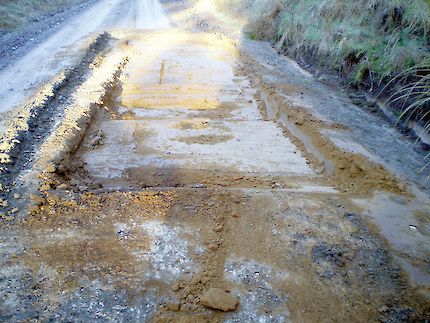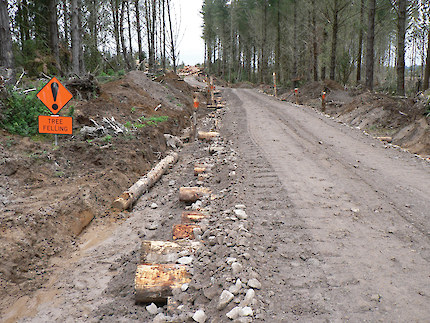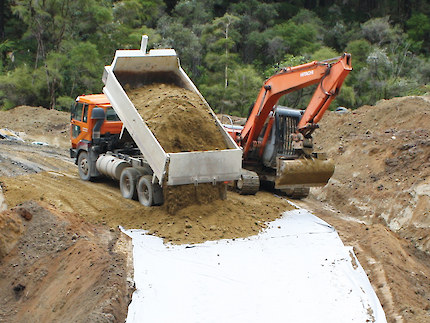
- The soft spot was dug out to 0.5 m below the finished road surface and will be backfilled with good material
- The soft spot can now drain into the ditch

- The soft spot was not dug deep enough
- The new metal cannot drain into the ditch, which may create another soft spot!
- Deepening the ditch drain may also improve the fix

- The new material that replaced the soft spot was compacted to improve strength and help seal the surface
- Aggregate with broken or angular faces are best as they lock together. Smooth stones don’t

- Straight river run gravel laid over a weak formation caused this failure
- River run gravel needs to be applied in a thicker layer. If it isn’t, the formation must be strengthened by compaction, geotextile, or other methods

- Corduroy was laid after the road failed
- The corduroy forms a layer to separate the subgrade from the metal. Corduroy also spreads vehicle weight across the subgrade
- This rapid and guaranteed fix was essential because the road was needed for logging

- This soft spot will continue to fail and allow water into the subgrade
- The fix is to fill in the potholes and create road shape to shed water
- If conditions allow, grading will improve the road. Grading in poor conditions may make the problem worse by opening the road up to water
Increasing the strength of the subgrade.

- These photos show hydrated lime used to stabilise a road:
- The lime is spread from a truck
- It is ripped into the surface with the grader
- A water truck is used to achieve optimum moisture before compacting
- Good drainage, crossfall and compaction is essential
- Use the road only when the lime has fully cured
- Do not use lime in cool conditions as it doesn’t cure
- Do not use agricultural lime as it won’t work

- Geotextile strengthens a road by separating the weak subgrade from the metal
- Separation stops the aggregate being worked down into the subgrade

- Geogrids work by increasing the strength of the metal
- The plastic grid helps lock the metal together; this increases its strength